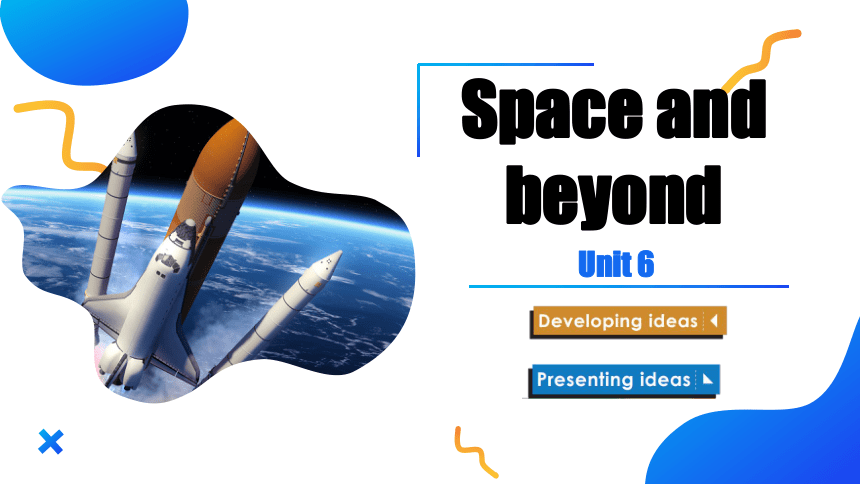(
课件网) Unit 6 Space and beyond PART.01 Learning Objectives Understand the content of the text, learn about the development history of telescopes and their important influence. 01 Deepen the understanding of the theme meaning of the unit and cultivate the thinking quality of daring to explore the unknown and seeking truth in science. 03 Use the vocabulary and expressions learned in this unit, learn to write a journal entry about living in space, and describe space life. 02 Learning Objectives Through reading, Students can understand the content of the text, learn about the development history of telescopes and their important influence. And learn to write a journal entry about living in space. Students can establish the thinking quality of daring to explore the unknown and seeking truth in science. 01 02 Teaching Focuses and Anticipated Difficulties PART.02 Lead-in What do you know about the Hubble Space Telescope. The Hubble Space Telescope, launched by NASA in 1990, has revolutionized our understanding of the universe. With its advanced technology and precise instruments, it has provided us with not only stunning images but also a wealth of valuable scientific data. Here are some images taken by the Hubble Space Telescope. Match the images taken by the Hubble Space Telescope to their nicknames. Do research online to find out more information about them. 01 1. The Pillars of Creation 2. The Horsehead 3. The Cat’s Eye PART.03 Reading Look at the title of the passage and predict what “eyes” refers to. EYES UPON THE NIGHT telescope Now read the passage and check your prediction. The night sky has been an endless source of fascination since the start of human history. For example, the mysterious large-eyed, bronze statues of the ancient Shu Kingdom, discovered at the Chinese archaeological site at Sanxingdui, were believed to have been able to look across great distances into the stars. In reality, humans can see very little of the night sky with the naked eye. And, for a long while, people were unable to understand what they could see. Not knowing what the stars were, people in ancient times used their imaginations to create a world in the sky. 02 EYES UPON THE NIGHT Our power to investigate and thus understand space changed dramatically when the first telescope was angled at the night sky, increasing as it did the power of the human eye and enabling us to understand that the universe is far larger than was previously imaginable. The planets were seen to be worlds similar to our own, many of them even having their own moons. Soon, it was understood that the Sun was just one star among billions in the galaxy we call the Milky Way. Some 300 years later, we learnt that the Milky Way itself was just one galaxy among billions of others, spread across the blackness of space like great islands of light and matter floating in a vast cosmic ocean. 02 Now read the passage and check your prediction. ... ...

